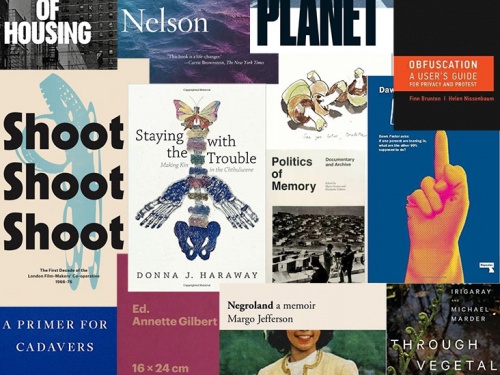Breasts, Hair and Cheese: Excerpts from The Duchamp Dictionary
Breasts, hair and cheese - what do these things have to do with the towering giant of 20th century art, Marcel Duchamp? Everything is revealed in cultural correspondent, curator, publisher and academic lecturer Thomas Girst's new publication The Duchamp Dictionary, which takes a novel and highly informative approach to Duchamp's life and work. In case you weren't able to secure a place for Mr Girst's sold out talk about the book, the ICA Blog has selected some choice examples from over 200 entries contained in the dictionary to give you a flavour of what's inside:
Artist
'I don't believe in art. I believe in the artist.'
Bicycle wheel
The original Bicycle Wheel readymade from 1913, and a second version, were lost. The third has a curious story. In 1995, a man walked into New York's MoMA and stole the third version from the gallery. The thief left the building unnoticed, then returned the artwork the next day by throwing it over the wall of the sculpture garden.
Breasts
Duchamp used 1,000 foam-rubber breasts for the catalogue covers of the Paris exhibition Le Surréalisme in 1947. The back covers read 'Prière de toucher', or 'Please touch'.
Cheese
During the second world war, Duchamp devised a scheme to transport his artistic materials out of Europe. On the way to the US, he passed through Nazi checkpoints in Paris posing as a cheese merchant. Luckily, he did not arouse suspicion.
Chess
The game occupied him so much that, out of jealousy, his first wife, Lydie Fischer Sarazin-Levassor, glued his chess pieces to the board. The marriage lasted seven months.
Fountain
The original version of the 1917 urinal Fountain was lost without ever being publicly displayed. He used the pseudonym R Mutt to conceal his authorship when he sent the work to an exhibition of the Society of Independent Artists in New York. The show's organisers, among them Duchamp himself, rejected the entry, which led to the resignation of Duchamp and other committee members. His friend Beatrice Wood defended the choice of object, saying "the only works of art America has given are her plumbing and her bridges".
Peggy Guggenheim
Although "every woman in Paris wanted to sleep with him", Guggenheim and Duchamp ended up some time in the late 20s not hooking up in the French capital as they "wandered around all night longing to go to bed together". In her memoirs, Duchamp gets full credit for introducing the socialite to modern art. There was a longstanding rumour that Duchamp once suggested cutting 20cm off a Jackson Pollock so it would fit into her townhouse.
Hair
Duchamp had only two phobias: flying in an airplane, and an "almost morbid horror of hair", according to his first wife. In 1920, Man Ray and Duchamp shot a movie – destroyed in development – of Man Ray shaving the pubic hair of a nude model.
Interviews
90% of his public interviews are from the time between his mid-60s and his death in 1968 aged 81 – so almost everything is seen through the eyes of an elderly man reflecting back.
Pablo Picasso
Duchamp told an interviewer in 1933 that "the modern artist must hate Picasso in order to make something new". It was because of Duchamp's rising influence that an ever-competitive Picasso came to despise him. When he learned of Duchamp's death, he said, after a long pause, "He was wrong!", while proclaiming of contemporary artists, "They loot Duchamp's store and change the wrapping."
Quick art
"Quick art, that's been the characteristic of the whole century from the cubists on. The speed that's being used in space, in communications, is also being used in art. But things of great importance in art have always to be slowly produced." Duchamp sometimes took 20 years to create a single artwork.
Readymade
Duchamp made no effort to exhibit readymades for four decades, and said they were "a very personal experiment that I never intended to show the public".
Henri-Pierre Roche
Despite much speculation, the love triangle of Jules, Jim and Catherine immortalised in Truffaut's film Jules and Jim was not inspired by the romance of Roche and his friend Duchamp with the artist Beatrice Wood in New York in the 1910s. Roche kept a diary, in which his sexual exploits are meticulously listed. Through Roche, we know of Duchamp's amorous adventure with three young women – and his penchant for "very vulgar women" as lovers.
Unrealised projects
As well as leaving the Large Glass unfinished, Duchamp left papers about unrealised projects. While some notes published in his lifetime mention things that did not need to be acted upon – like using a Rembrandt as an ironing board – the notes that became available posthumously include the following: "take one cubic centimetre of tobacco smoke and paint the exterior and the interior surfaces a waterproof colour"; "trace a straight line on Rodin's The Kiss as seen from a sight".
Work
"I would have wanted to work, but deep down I'm enormously lazy. I like living, breathing, better than working. I don't think that the work I've done can have any social importance whatsoever in the future." ■
The preceding text is an extract from The Duchamp Dictionary by Thomas Girst, published by Thames & Hudson, £16.95.
This article is posted in: Articles, Events
Tagged with: Thomas Girst, Marcel Duchamp, The Duchamp Dictionary, Words, Biography, books





